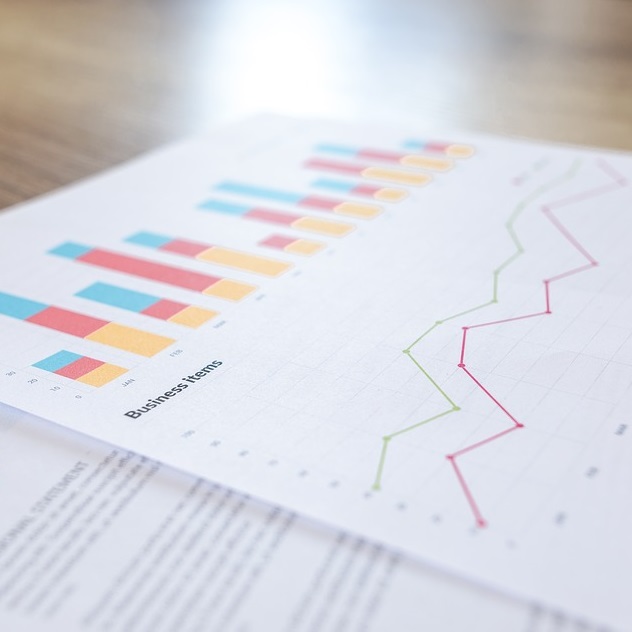Tell me what you’re looking for and I’ll tell you who publishes it
<p>Every day, organizations waste hours looking for data and writing up reports on issues that someone else has already written about. The healthcare sector is no exception: we at Biocat are now offering a compilation of essential resources which can save you lots of time.</p>

When you’re preparing a presentation for the next day, how many times have you needed information that you thought someone must have, but you don’t know who or where? Ever hopeful, you go to Google, click on the “search” button and get… 14,000 results! “Surely one of the top hits will be useful”, you tell yourself… Or not.
The Life Sciences sector is extremely knowledge-intensive. Professionals in the sector are assumed to have the basic skills needed to use scientific and technical information, but the reality is that not everyone is familiar with the sources or has the wherewithal to judge their veracity or reliability. We’re talking not about scholarly articles – most know about Scopus and Web of Science – but about the more mundane issues in our field: innovation, transfer, start-ups, patents, market, competitors, investment, health data, etc.
Knowing how to find the right information when you need it is that added-value edge that helps a professional or organization apply the competitive intelligence that makes a difference. Below we will survey some of the most common sources, organized into sections so that – this time! – you can go straight to what you’re looking for.
Research / Innovation / Transfer

Let’s begin with the typical questions in our setting: What is the public spending on R&D (as % of GDP)? How many scholarly publications are there per million inhabitants in a given country or region? What about the percentage of PhDs? Socioeconomic, human resources, investment, internationalization indicators… You can always scroll from one website to the next, but if you want to be sure to find the latest official statistics and spare yourself the analysis, the European Union’s Research and Innovation Observatory provides the best results on RDI from the leading economies. It is perfectly complemented by tables of EU indicators, the European Innovation Scoreboard and the Regional Innovation Scoreboard, and with a selection of the main innovation indicators at the country and autonomous community level provided by ICONO, the Observatorio Español de I+D+I (Spanish RDI Observatory).
For very specific data, you can go directly to the offices in charge of publishing them, such as EuroStat for the EU. But each country has theirs, too. In Spain it’s the INE and in Catalonia IDESCAT.
Gender is a hot topic. If you’re interested, the She Figures Handbook 2018 is published every 3 years and provides the gender indicators for the EU. Use it as the leading source of comparable pan-European statistics on the gender balance in science. It includes indicators on salary, working conditions, competitive funds secured, etc.
Financing and calls for proposals

Another common headache is trying to find out about the calls for proposals for competitive funding and when they open. AGAUR can help you with this calendar of all the Horizon 2020 calls for proposals for 2019.
On a Spain-wide scale, the Agencia Estatal de Investigación (State Research Agency) publishes a running calendar of when RDI calls for proposals open and are awarded (training and hiring PhDs, Challenges, Platforms, Centers of Excellence, etc.). The goal? For the scholarly community to be able to plan their research work and prepare their applications with plenty of lead time. You can see the calendar for the opening and awarding of calls for proposals, with a monthly breakdown of the dates, evaluation processes, allegations, decisions, and tentative and final results. There is even a document with FAQs. ICONO can also help you with its search engine of calls for proposals, and it has an alert service that you can sign up for.
Projects and research groups
 If you’ve decided to submit a proposal, you may be looking for synergies in your community, or perhaps you want to know if anyone else in academia is researching the same thing. Go to the Portal de la Recerca de Catalunya (Research Portal of Catalonia), which compiles all the researchers (more than 10,000 of them), research groups and projects in the country, plus it directly provides the researcher’s contact information. It covers all the universities and hospital research institutes, like the VHIR or IDIBELL, and more and more research centers are joining it.
If you’ve decided to submit a proposal, you may be looking for synergies in your community, or perhaps you want to know if anyone else in academia is researching the same thing. Go to the Portal de la Recerca de Catalunya (Research Portal of Catalonia), which compiles all the researchers (more than 10,000 of them), research groups and projects in the country, plus it directly provides the researcher’s contact information. It covers all the universities and hospital research institutes, like the VHIR or IDIBELL, and more and more research centers are joining it.
Patents and technology watch

For statistics on patents, the WIPO website is fairly comprehensive. If you want to find out whether your idea is already registered or who is developing the latest technology on a specific topic, forget about patents and instead go directly to the official databases, WIPO (worldwide) or EPO (European), although each country also has its own agency, such as UPSTO for the United States, and OEPM for Spain. And yes, the search will yield the complete document on the patent. For free! Or you could just go to Google Patents, desperately search for the patent using keywords, and see what its amazing algorithms yield up.
If you just want to keep abreast of the advances and new developments in your sector, the Spanish office has a free technology watch service which will email you a selection of the latest patents in fields like health biotechnology or medical technologies.
Beyond these usual suspects, there are also a few gems you may not be aware of. Take a look at LENS, a platform with the clear goal of improving global innovation. It provides access to more than 115 million patents and more than 200 million records of academic publications, and it crosses these data. If you’re looking for an article, you’ll see not only its citations in other articles but also the patent citations. Or conversely, if you’re looking for a patent, it will tell you which articles cite it. Research traceability at last! And this holds true, too, of what is called the "International Innovation and Industry Influence Mapping," where you can find out which research centers produce the most innovation. LENS is constantly growing and integrating scholarly information systems. If you’re curious, take a look. This platform may solve the problem of having a technology watch system for many small companies!
Companies / Start-ups / Investments

Do you need basic information on Spanish companies, balance sheets, and annual accounts? You can find it on SABI, for example, or information on international companies via other products by the same Informa Group. This service is by subscription only, but there are basic subscriptions starting at just €25/month. And good news: if you’re a researcher, many universities provide free access.
If you’re looking for information on start-ups and the investments they're raising, there is a host of business intelligence platforms that provide this data like Crunchbase, Dealroom, Pitchbook, and Tracxn. The majority give part of this information as open access or allow free trials.
Some of these platforms have interesting sections, like the unicorn tracker in CBInsights. This platform provides part of its content as open access and has great reports on the status of technology (especially considering that the majority of market studies cost money!). Its Top Healthcare Analysis section compiles the best prospects in digital health, pharma, biotech, medtech, and issues like artificial intelligence and blockchain applied to health, ageing, personalized medicine, or rare diseases, with a complete mapping of which start-ups are working on each issue.
The downside: the majority of Catalan start-ups in the sector are not on these platforms yet. So we at Biocat want to help you: we have compiled them in the BioRegion Directory. For example, you can track the growth in the new healthtech start-ups: you can already find more than 120 new companies working in this field!
Reports from major consultancies

So who publishes the blockbusters, or the rankings of the top biopharma or medtech companies? This is the realm of the large consultancies, whose annual reports have become the most common sources for this kind of info. EY, PwC, Deloitte, and KPMG are the classics, and their sector portals include important analysts so you can track industry trends.
Pharma R&D Annual Review 2019, from Pharmaprojects, is one of the basics. It contains all the pharma R&D: pipelines for the development phase, by therapeutic area, top pharma companies by pipeline volume, etc. However, this report does not include medical technologies, and for this field there is another mainstay: Pharma, Biotech and Medtech 2018 in Review from Evaluate, with info on the main M&A’s, investment rounds, IPOs, etc. The same group publishes the World Preview 2019, Outlook to 2024, a report about the forecasts in the biopharma world that predicts the leading companies’ sales or how spending on clinical development per therapeutic area will develop.
In terms of digital health, we can highlight StartUp Health Insights, one of the best documents to see how innovation in the healthcare sector is evolving, basically by tracking investment. Investments, investors, deals, and subsectors with the most potential are analyzed rigorously. A must-read.
You can also find open-access reports on specific therapeutic areas. IQVIA (formerly IMS Health and Quintiles), for example, publishes the Global Oncology Trends 2019, with information on the oncology pipeline, new treatment mechanisms, clinical trial activity, patients who benefit from the new emerging therapies, etc.
Medicines and clinical trials

To learn about new medicines or which drugs are approved for a given indication, you can directly check the FDA’s statistics page. There was a total of 59 in 2018, and you don’t have to wait until the end of the year to see the results for 2019 because the table is updated regularly.
For information on clinical trials, go directly to the global ClinicalsTrials.gov database, the platform of the European agency or the Spanish platform. If you want to get a glimpse of the clinical trials underway in Spain, check the BEST project by Farmaindustria, which periodically updates the indicators on clinical research in medicines.
Health and patients

In terms of the population’s health, almost all administrations and countries have open-access data portals. What can you find there? Well, for example, you can find out the official figures on the population’s life expectancy, the evolution of cancer in Catalonia or the prevalence of Type-1 Diabetes. Check the Observatori del Sistema de Salut de Catalunya (Observatory of the Healthcare System of Catalonia) or Scientia, the Dipòsit d’Informació Digital del Departament de Salut (Digital Information Repository of the Department of Health), which provide data with the requisite impartiality and rigor. In Spain, the Ministry of Health maintains the Sanidad en datos (Healthcare in Figures) portal, and globally the most common references are from WHO and the World Bank.
If you need to contact patients’ associations in the specialty in which you are working, there is a Spain-wide directory that maps all of them (more than 1,800 records). You can filter it by autonomous community and illness, and each of them provides contact info.
As you can see, there are many entities that invest effort and resources into providing information and making it accessible. If you’ve checked all these potential sources but still can't find what you’re looking for, phone or send an email to the institution that you think may be able to give you more information. Remember that Google isn't your only option! And always cite the source… it's so little effort but means so much!
We could go on and on about on this topic. If you find it interesting, we can continue to select the best reports and resources in future Biocat blog entries. We look forward to your feedback. Have a great summer and we'll see you again in September!


